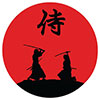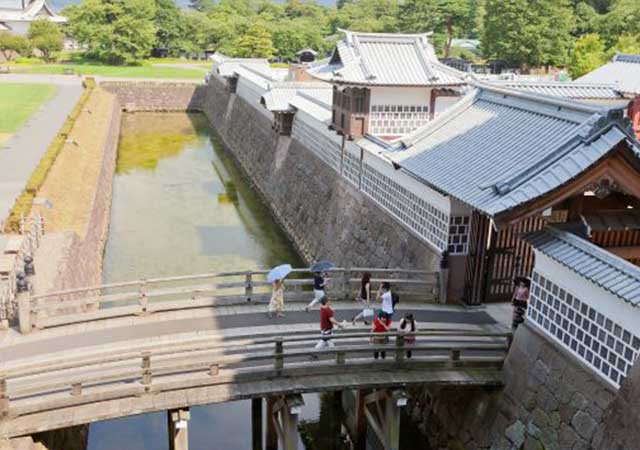
Construction of Kanazawa Castle began in 1580 on the orders of Sakuma Morimasa, a vassal of Oda Nobunaga. The castle was built on the site of the Ikko-ikki sect's Oyama Gobo temple, which is why it is sometimes called Oyama Castle. Morimasa managed to build several moats and begin construction of a castle town. However, after his defeat at the Battle of Shizugatake in 1583, he was executed, and ownership of the castle passed to Maeda Toshiie (1538–1599).
Maeda Toshiie had been in the service of Oda Nobunaga since 1551 and during that time rose from page to general. He participated in many battles: at Okehazama (1560), Moribe (1561), Anegawa (1570), Nagashino (1575), Shizugatake (1583), as well as in the Komaki-Nagakute (1584) and Odawara (1590) campaigns. After Nobunaga's death, he entered the service of Toyotomi Hideyoshi and held a position in the command headquarters in Kyushu during the Korean campaign. Before his death, Hideyoshi appointed him one of the five regents for the young heir Toyotomi Hideyori.
In 1583, Toshie completed the construction of the castle, and in 1590, he began a large-scale reconstruction, significantly expanding the complex. Kanazawa Castle occupied an impressive area of 600 by 400 meters and included four courtyards located in terraces from south to north. The main courtyard, hommaru, stood on the southern hill. A five-story, six-level donjon, tenshukaku, was built here, but it burned down in 1602 and was never rebuilt. After that, hommaru gradually fell into disrepair.
Below was the second courtyard, the ninomaru, separated from the hommaru by walls and a moat. It was here that the ruler's palace was located, making it the main center of the castle during the Edo period. Further down was the third courtyard, Sannomaru, also surrounded by walls and a moat. The entrance to the castle was guarded by a complex barbican gate called Ishikawa-mon. The lowest level was the fourth courtyard, Shinmaru, which housed the administrative buildings of the Kaga domain.
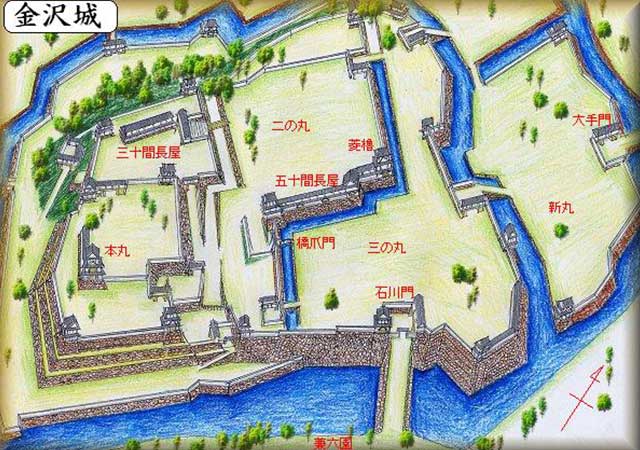
Throughout its history, the castle suffered from fires on several occasions, the last of which occurred in 1881 and destroyed many buildings. Nevertheless, the Maeda clan ruled the Kaga province from Kanazawa Castle for 14 generations, until the Meiji Restoration. During World War II, it was used as a military base for the Imperial Army, and after the war, it became the campus of Kanazawa University, which was relocated in 1995.
Some elements of the castle have survived since its foundation. The moats and stone walls of Ishigaki, as well as two 19th-century buildings, the Sanjyukken Nagaya warehouse tower (1858) and the Tsurumaru warehouse (1848), have survived to this day. The Ishikawa-mon gate complex has been preserved in its 1788 reconstruction and consists of a masugata, a barbican with a large yagura-mon gate and a small korai-mon gate. These structures, along with the Sanjyukken Nagaya tower and the Tsurumaru warehouse, have been designated as Important Cultural Properties.
In 2001, with the support of Sumitomo Corporation and local authorities, a large-scale reconstruction of the castle began. The first buildings to be restored were the Ninomaru: the Tsuzuki Yagura and Hishi Yagura towers, connected by the Gojikken Nagaya gallery. Their appearance was recreated based on mid-19th century drawings using traditional techniques and authentic materials. In 2001, these towers were opened to the public, and the Gojikken Nagaya, whose name translates as “long tower 50 ken (about 90 meters) long,” housed an exhibition dedicated to construction methods.
In 2010, the Kahokumon gate complex, which protected the bridge between the fourth and third courtyards, was restored. In 2015, the Hasizumemon gate barbican complex, which covered the main bridge between the third and second courtyards, was reconstructed next to the Tsuzukimon tower. In the same year, the Gyokusen Inmaru garden was recreated on the castle grounds.
The most recent reconstruction dates back to 2020 and concerns the Nezumitamon gate, a tower-type structure that burned down in a fire in 1884. The gate was named “mouse” because of the gray, “mouse-colored” plaster that covered it.
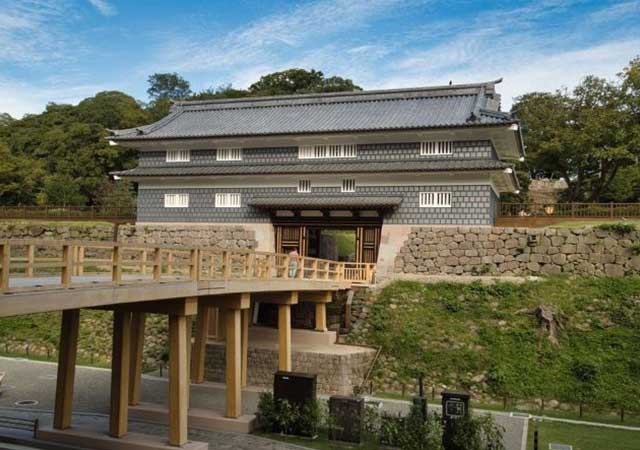
In 2006, the Japanese Castle Society included Kanazawa Castle in its list of “100 Outstanding Castles of Japan.” In addition, the entire complex has official status as a “National Historic Site.”
See also
-
Nakatsu Castle
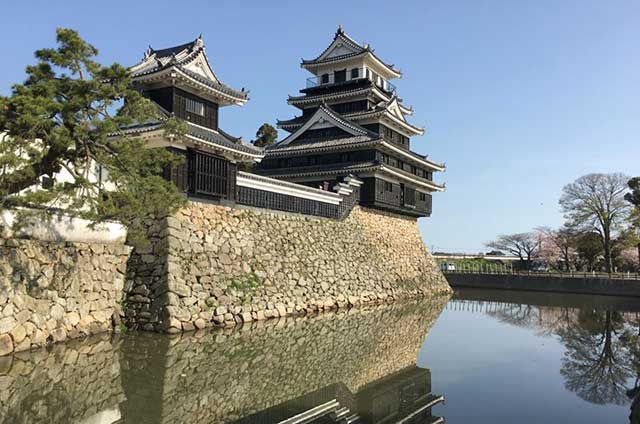
Kuroda Yoshitaka (1546–1604) was one of the closest advisors to the legendary military commander Toyotomi Hideyoshi. He took part in key military campaigns of the late 16th century, including the campaign against Shikoku in 1585 and the campaign against Kyushu in 1587. Later, during the second campaign in Korea, Yoshitaka served as chief advisor to the commander of the invasion forces, Kobayakawa Hideaki. After Hideyoshi's death, he swore allegiance to Tokugawa Ieyasu, thereby securing his influence and patronage under Japan's new leader.
-
Edo Castle
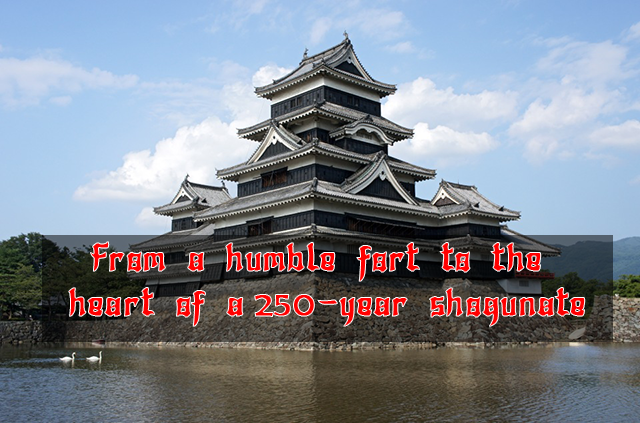
The history of Edo Castle dates back to the Heian period, when the Edo clan built a small fort on this site. In 1457, the vassal of the Uesugi clan, Ota Dokan (1432–1486), constructed a full-scale castle here. Internal conflicts weakened the Uesugi clan, and in 1524, Ota Dokan’s grandson, Ota Yasutaka, surrendered the castle without resistance to the forces of Hojo Soun, the ambitious leader of the Hojo clan. While Odawara Castle remained the clan's main stronghold, Edo was considered a key strategic fortress.
-
Samurai Museum Shinjuku

Situated in the vibrant district of Shinjuku, the museum showcases an extensive collection of samurai armor, weapons, and cultural artifacts spanning from the Kamakura to the Edo period. The exhibits aim to convey the samurai's unwavering commitment to honor and discipline, reflecting how their spirit continues to influence modern Japanese culture.
-
Anjo Castle

Anjo Castle was built on a slight elevation at the edge of the Hekikai Plateau, about 2 kilometers southeast of present-day central Anjo City in Aichi Prefecture. Today, the surrounding area thrives on large-scale agriculture and automotive manufacturing, utilizing the expansive flatlands and its proximity to the Nagoya region.
-
Numata Castle
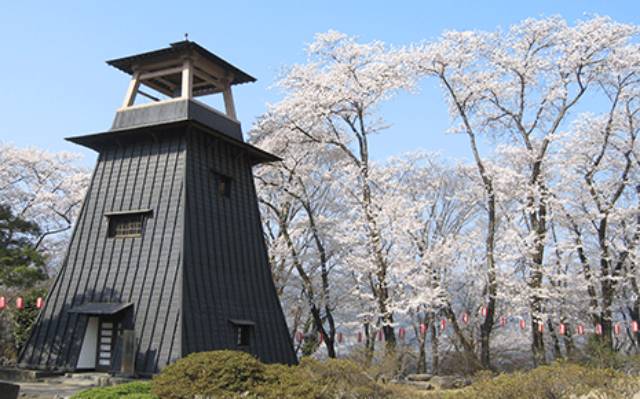
Numata Castle, located in Numata, northern Gunma Prefecture, Japan, has a rich and complex history. During the late Edo period, it served as the residence of the Toki clan, who ruled the Numata Domain. Over the centuries, the castle changed hands multiple times and was the site of significant battles during the Sengoku period.
-
Iwabitsu Castle
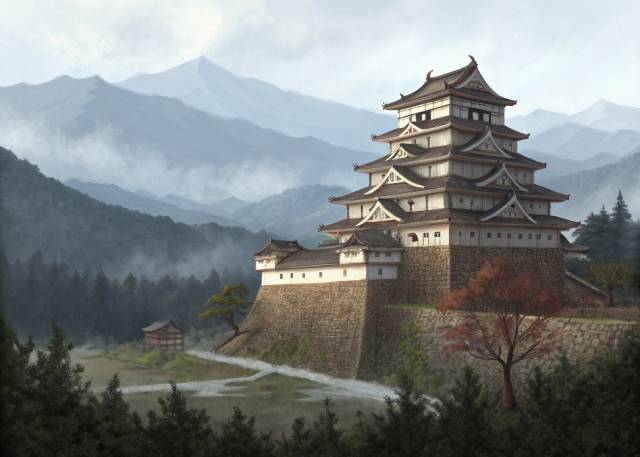
Iwabitsu Castle is a yamashiro-style (mountain) castle located atop Mount Iwabitsu in Higashiagatsuma, Gunma Prefecture, Japan. Recognized for its historical significance, its ruins have been protected as a National Historic Site since 2019.
-
Tsutsujigasaki Castle

Tsutsujigasaki Castle (Tsutsujigasaki Yakata) served as the fortified residence of the last three generations of the Takeda clan and is located in the heart of Kofu, Yamanashi Prefecture, Japan. Unlike traditional Japanese castles, it was not referred to as a "castle" in Japanese, as the Takeda clan famously believed in relying on their warriors as their true fortifications, stating, "Make men your castle, men your walls, men your moats." Designated a National Historic Site in 1938, the ruins are now open to the public and house the Takeda Shrine, a Shinto shrine dedicated to the deified spirits of the Takeda clan.
-
Nagoya Castle
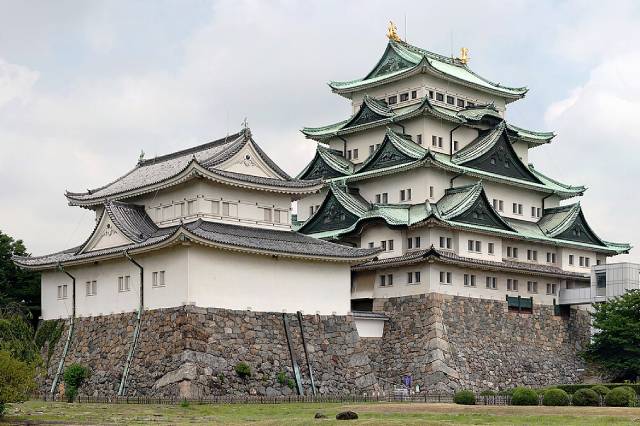
Nagoya Castle, originally built by the Owari Domain in 1612 during the Edo period, stands on the site of an earlier Oda clan castle from the Sengoku period. It became the centerpiece of Nagoya-juku, a significant castle town on the Minoji road, which connected two major Edo Five Routes: the Tokaido and the Nakasendo. In 1930, ownership of the castle was transferred to the city by the Imperial Household Ministry, establishing it as the focal point of modern Nagoya. Although partially destroyed in the Pacific War in 1945, the castle has undergone continuous restoration and preservation efforts since 1957.

